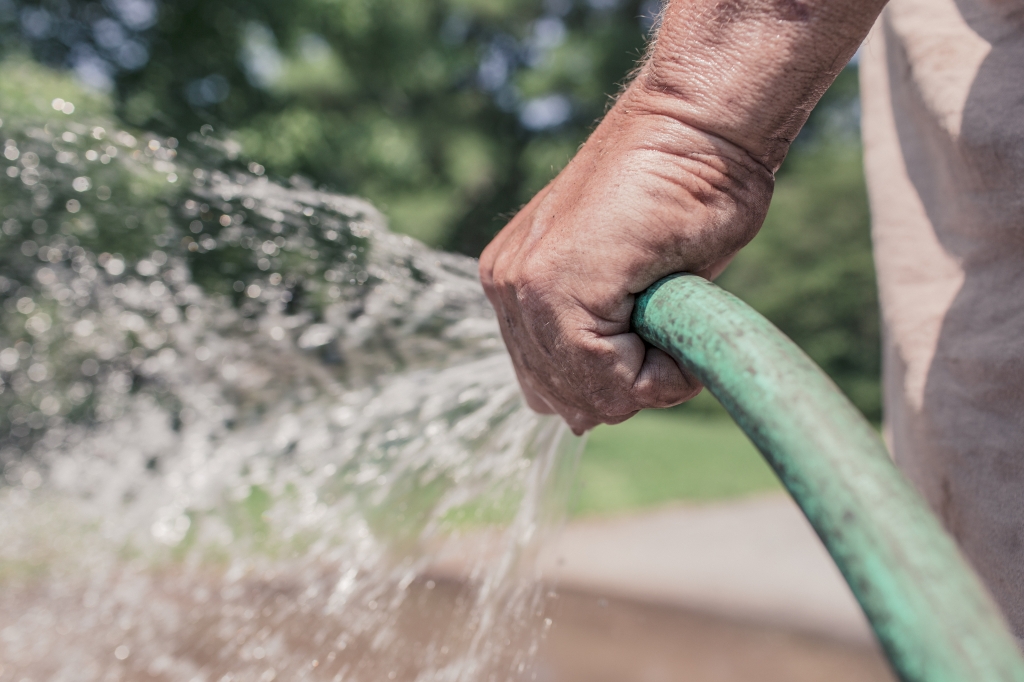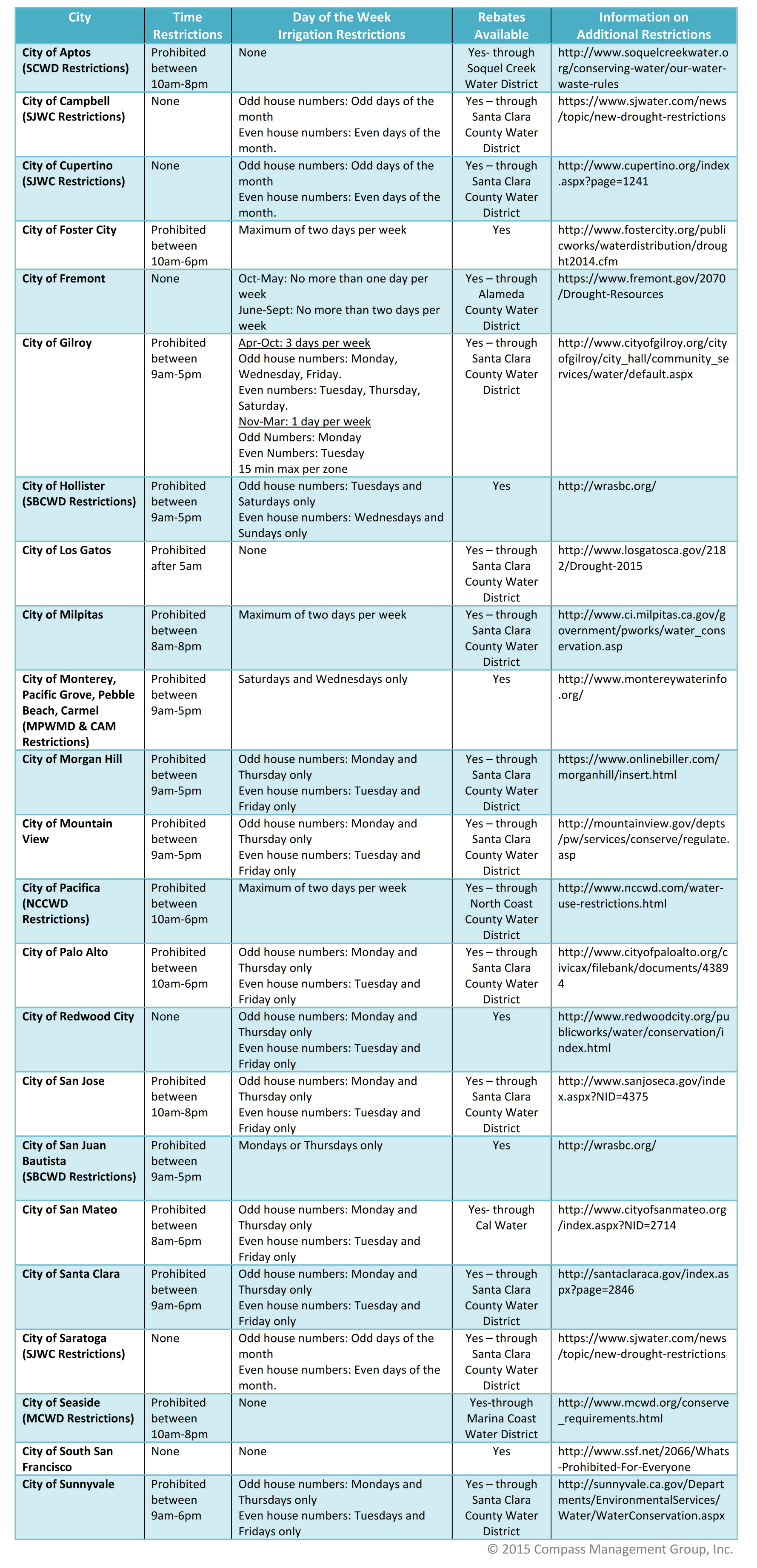The drought situation  in California is dire. Governor Brown’s mandatory statewide cutback of 25% went into effect on June 1, 2015, and it’s going to have an impact on your water bill. A lot of tips and information have circulated about the drought in the news, but most are generalized bits and pieces of information that leave you unclear on your specific role. The mandatory cutbacks will affect each city differently, making it crucial to have specific information. We’ve broken down this information into a simple question and answer format to help you make an informed decision on what you need to do to meet the new requirements.
in California is dire. Governor Brown’s mandatory statewide cutback of 25% went into effect on June 1, 2015, and it’s going to have an impact on your water bill. A lot of tips and information have circulated about the drought in the news, but most are generalized bits and pieces of information that leave you unclear on your specific role. The mandatory cutbacks will affect each city differently, making it crucial to have specific information. We’ve broken down this information into a simple question and answer format to help you make an informed decision on what you need to do to meet the new requirements.
How will the mandatory cutback affect me?
Your water company will fine the customers that are not cutting back their water usage enough. You can look up the percentage that you must cutback by finding your city on this table. The percentage assigned to your city will be in the column labeled ‘Conservation Standard’.
Why is my city’s percentage not the same as the statewide cutback of 25%?
The verbiage “statewide cutback of 25%” comes from the goal to collectively cut back the state’s water usage by 25%. However, it’s not as simple as forcing everyone to cut back by 25%, as some cities have been conserving a lot more than others. The cities with strict water restrictions in place and diligent water conserving citizens are assigned a smaller mandatory percentage because they are already doing their part to conserve. Cities that have lax watering restrictions and citizens that have not been conserving enough water were assigned higher mandatory percentages. These varied restrictions, if followed, should lead to a 25% reduction in statewide water use.
How do I know if I’m conserving enough?
Sometimes it is unclear to know exactly how to cut back, and by how much. We’ve all heard many tips for conserving water but it’s still hard to clearly know which daily activities your family is using too much water for. Santa Clara County Water District created an excellent and easy to use calculator to pin point where your family needs to cut back on water usage. Click here to use the calculator.
For a personalized audit of your home’s water consumption, many water districts offer a free visit from a water usage surveyor. The surveyor will come to your home and inspect your toilets, faucets, shower heads, and irrigation system and create a list of the changes needed and where to cutback. They’ll also be able to create a personalized irrigation schedule (within your cities restriction limits) to keep your grass alive. Some water districts have approved for their surveyors to install low-flow shower heads, faucet aerators, and toilet flappers for free where necessary. Contact your water district for details and to schedule your appointment.
What if my water bill is paid by my HOA?
For some homeowners living in an HOA, the water bills are paid by the association and individual owners never see a bill. This does not mean that these owners are exempt from the fees that come from failing to cut back on their water use. The cost of the estimated monthly water bills are budgeted for and factored in to the cost of dues. If the water bill consistently exceeds the budget each month, your Board of Directors may be forced to raise dues or charge a special assessment to cover the extra cost.
What are the restrictions for all Californians?
According to the California Water Boards the following is prohibited for all California residents:
(Please note that your city and/or HOA may have additional regulations that are not outlined below.)
• Using potable water to irrigate ornamental turf on public street medians
• Using potable water to irrigate landscapes of new homes & buildings inconsistent with CBSC & DHCD requirements
• Using outdoor irrigation during & 48 hours following measurable precipitation
• Using potable water in decorative water features that do not recirculate the water
• Using hoses with no shutoff nozzles to wash cars
• Runoff when irrigating with potable water
• Using potable water to wash sidewalks & driveways
What are the restrictions for watering my lawn?
For owners living in single family homes with their own landscape irrigation systems, many cities along with the water companies have placed restrictions on irrigation watering. Scroll to the bottom of this post and find your city on the table we created to see the restrictions you must follow to avoid fines.
Are there any incentives to make water saving changes around my home?
Yes! This is an excellent time to install a water conscious landscape and drought tolerant plants as rebates are available to help lessen the cost. It’s also a great time to make changes inside your home. Most water districts offer rebates for replacing old toilets, washing machines and dishwashers for high-efficiency models. Some water districts are even offering rebates for installing instant water heaters. Making any of these changes will save water and money in the long run. Be sure to check with your water provider for complete information on the rebates available in your area.
Remember that landscape changes must be approved by your Board, so be sure to submit an architectural application before beginning any work.
Our Board wants to make our common area landscape drought tolerant, can we use our reserve funds to make these changes?
(The following answer was reprinted from Davis-Stirling.com by Adams Kessler PLC.)
QUESTION: In light of the drought emergency, can reserve funds be used for drought-friendly landscape renovations?
ANSWER: I checked with Robert Nordlund, President of Association Reserves, Inc. to see what he thought. Following is his response:
Existing Landscape Reserves. Many associations already have landscape-related projects in their reserve study, the most common being tree trimming. Many others have periodic landscape renovation projects to freshen up the appearance and health of their greenscape. If an association has a landscape renovation reserve component, those funds could be used for replanting and redesigning with drought-tolerant plants.
Borrowing. If they don’t have funds already set aside, another strategy is to borrow from reserves with these borrowed funds expected to be recouped by savings from lower water usage. While borrowed reserve funds must be repaid within twelve months, the following allows for the delay of repayment:
…the board may, after giving the same notice required for considering a transfer, and, upon making a finding supported by documentation that a temporary delay would be in the best interests of the common interest development, temporarily delay the restoration. (Civ. Code 5515(d).)
Savings. If you find that a $50,000 landscape renovation project would result in a projected $50,000 water savings over three years, and if your reserve balance can support the expense without delaying necessary reserve projects, an updated reserve study can provide the necessary documentation. The result is a zero-interest loan from reserves to implement the project.
Additional Points. Make sure the project meets your architectural requirements. You don’t want to replace grass in your greenbelts with artificial turf if you’ve been denying homeowner requests for similar projects in their front yards. If you are installing artificial turf (or something else that will need renovation or replacement), remember to add it to your reserve component list.
(End of reprinted answer from Davis-Stirling.com by Adams Kessler PLC.)
What are some easy changes I can make around the house to save water?
–Notify Compass Management of any leaks you notice around your association. The more information you can provide, the better. The exact location of the leak and a photo are much appreciated. Don’t assume someone else has called in a leak, we would rather receive multiple notifications than none at all.
–Turn off the faucet while brushing your teeth. It’s completely unnecessary to let the water run while you brush. Turning the water off will not inconvenience you in any way but will save water.
–Use unfinished water bottles to water plants. Instead of pouring the water from unfinished bottles down the sink, use them to water plants. Then be sure to recycle the bottles, of course.
–Place a bucket in the sink and let it fill up while waiting for the water to get hot for washing hand-wash only dishes. Use this water for miscellaneous household uses such as: watering plants, washing windows, or filling the windshield washing fluid tank of your car.
–Scrape the food off of dishwasher-safe dishes and place them straight in the dishwasher. This tip saves you time and effort while you’re saving water! Most newer dishwashers will easily remove any remaining residue off dirty dishes. If you have an older dishwasher, scrape the leftover food off of all the dishes into the trash and then quickly rinse them all before placing them into the dishwasher.
Irrigation Watering Restrictions by City

Sources:
USGS: http://water.usgs.gov/edu/qa-home-percapita.html
CBS San Francisco: http://sanfrancisco.cbslocal.com/2015/05/31/drought-californias-mandatory-reductions-for-water-consumption-begin-june-1/
ACWA and CDWR: http://saveourwater.com/
SCCWD: http://www.save20gallons.org/
ABC7 News: http://abc7.com/news/mandatory-water-restrictions-in-effect-across-california/760026/
SCPR: http://www.scpr.org/news/2015/04/02/50747/california-drought-restrictions-faq-what-the-gover/
SWRCB: http://www.waterboards.ca.gov/water_issues/programs/conservation_portal/index.shtml

Follow us!
Twitter
LinkedIn